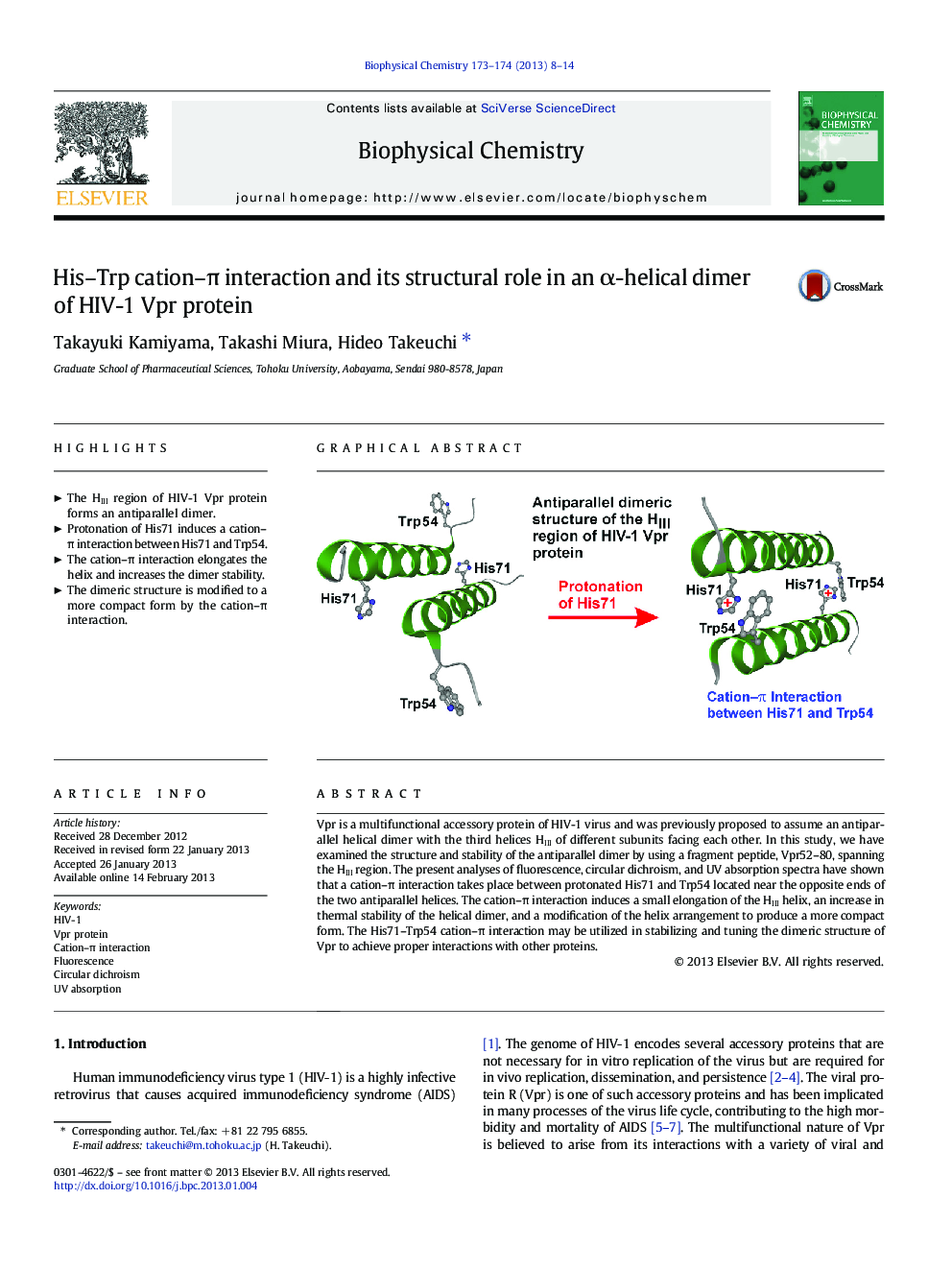| Article ID | Journal | Published Year | Pages | File Type |
|---|---|---|---|---|
| 5371129 | Biophysical Chemistry | 2013 | 7 Pages |
Vpr is a multifunctional accessory protein of HIV-1 virus and was previously proposed to assume an antiparallel helical dimer with the third helices HIII of different subunits facing each other. In this study, we have examined the structure and stability of the antiparallel dimer by using a fragment peptide, Vpr52-80, spanning the HIII region. The present analyses of fluorescence, circular dichroism, and UV absorption spectra have shown that a cation-Ï interaction takes place between protonated His71 and Trp54 located near the opposite ends of the two antiparallel helices. The cation-Ï interaction induces a small elongation of the HIII helix, an increase in thermal stability of the helical dimer, and a modification of the helix arrangement to produce a more compact form. The His71-Trp54 cation-Ï interaction may be utilized in stabilizing and tuning the dimeric structure of Vpr to achieve proper interactions with other proteins.
Graphical abstractDownload full-size imageHighlights⺠The HIII region of HIV-1 Vpr protein forms an antiparallel dimer. ⺠Protonation of His71 induces a cation-Ï interaction between His71 and Trp54. ⺠The cation-Ï interaction elongates the helix and increases the dimer stability. ⺠The dimeric structure is modified to a more compact form by the cation-Ï interaction.
